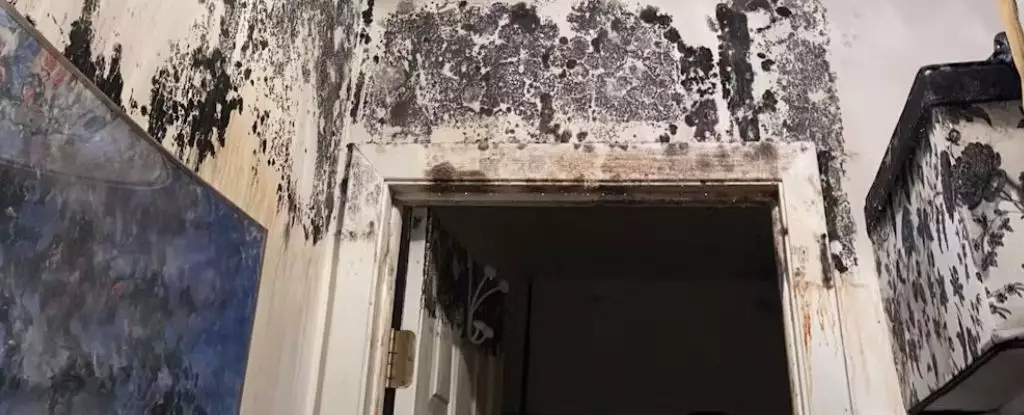Mold growth is a nagging concern for many homeowners, often manifesting as unwelcome black spots or dusty patches that can evoke feelings of anxiety. While it’s crucial to recognize the presence of mold, distinguishing between harmless varieties and those that pose health risks is essential. This article aims to delve into the nature of mold, its effects on health, and the steps homeowners can take to manage its growth effectively.
Mold is a form of fungus, and it boasts an astounding diversity—over a million species exist in the natural world. While some mold species play vital roles in producing life-saving medications, others can result in severe health consequences when they proliferate in indoor environments. The concern arises particularly from molds that release spores, microscopic particles that can trigger allergic reactions or exacerbate asthma. Surprisingly, despite widespread fears, robust scientific literature fails to confirm that indoor molds are a direct cause of severe illnesses beyond respiratory issues.
Molds are ubiquitous; they thrive on a myriad of materials, from the soil in gardens to the food found in pantries. This adaptability makes them essential to our ecosystem, acting as nature’s recyclers by breaking down organic matter and returning essential nutrients to the soil. The spores that molds produce are a mechanism of spreading, floating invisibly in the air until they land on a suitable surface, where they can germinate and extend into new colonies.
Where Mold Grows
Mold can invade even the tidiest homes. Damp environments, such as bathrooms and kitchens, often serve as incubators. Surfaces under sinks, along with shower curtains and even household appliances, can harbor mold growth. Water accumulation is a crucial factor; thus, leaks and flooding can catalyze mold outbreaks. Professionals can often identify specific mold species through microscopic examinations; common varieties include Aspergillus, Penicillium, and Cladosporium, each thriving in unique conditions.
Visible mold patches are a telltale sign of moisture issues, particularly in drywall where excessive dampness can lead to widespread growth. While minor outbreaks, smaller than the size of a pizza box, can often be handled independently with cleaning products, significant infestations generally require replacement of affected materials and thorough remediation.
When to Seek Professional Help
Homeowners concerned about substantial mold growth should consider consulting an indoor air quality specialist. These professionals can conduct air tests, comparing indoor and outdoor spore concentrations. Such testing is invaluable, as a stark difference in spore levels typically indicates mold growth indoors, often warranting immediate action. In addition, detection of varying mold types between indoor and outdoor environments may signal underlying issues that require resolution.
The presence of mold can be troublesome for a variety of reasons. Firstly, it can drastically diminish the aesthetic appeal of living spaces, creating unsightly blemishes and unpleasant odors. Secondly, spores released into the air may lead to respiratory issues for sensitive individuals, including those with asthma or allergic rhinitis. Thirdly, certain molds produce mycotoxins associated with severe health risks. While there is a significant debate within the scientific community regarding mycotoxins and their implications, it is wise to treat extensive mold infestations as a priority to minimize their effects on health.
One type of mold that has gained notoriety is Stachybotrys, often referred to as “toxic black mold.” Named for its association with a concerning health incident involving infants, Stachybotrys can proliferate in moist environments, especially within water-damaged drywall. Although the mold can produce mycotoxins that concern homeowners, the actual inhalation risk is relatively low due to the weight and stickiness of the spores. It’s crucial to recognize that while some molds may indeed carry risks, children, whose lungs are still developing, are particularly vulnerable, making mold management even more critical in family homes.
The importance of preventing mold in our homes cannot be overstated. Homeowners should remain vigilant about moisture management by addressing leaks swiftly and maintaining appropriate ventilation throughout their living spaces. Regular cleaning can mitigate mold growth, particularly in areas prone to moisture build-up.
An understanding of mold and its implications equips homeowners with the knowledge needed to maintain a healthy living environment. By recognizing when and how to take action against mold growth, individuals can safeguard their health while preventing unnecessary stress associated with mold-related issues. Being proactive about moisture control and remediation will ensure a safe and welcoming home for all residents.


Leave a Reply